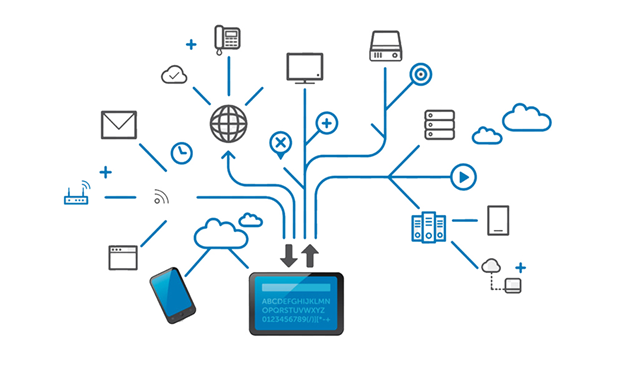IT Infrastructure Installation and Deployment
Category: Network & Security

Project Overview
This project encompasses the installation and deployment of comprehensive IT infrastructure solutions, including switches, firewalls, workstations, networking components, servers, and more. Leveraging our extensive experience, we ensure seamless implementation of robust and scalable IT environments tailored to meet the specific needs of diverse organizations.
Project Phases
Phase 1: Initial Assessment and Planning
1. Requirement Analysis
- Stakeholder Meetings : Conduct meetings with key stakeholders to understand their business objectives, IT requirements, and growth projections.
- Current Infrastructure Review : Assess the existing infrastructure, including network topology, hardware components, and software applications.
2. Project Scope Definition
- Scope and Objectives : Define the project scope, objectives, timelines, and responsibilities.
- Budget Planning : Develop a budget plan considering hardware, software, licensing, and implementation costs.
Phase 2: Solution Design and Architecture
1. Infrastructure Design
- Network Design : Design the network architecture, including LAN/WAN setup, subnetting, VLANs, and IP addressing schemes.
- Server Configuration : Specify server configurations based on workload requirements, including virtualization, storage, and backup solutions.
2. Vendor Selection and Procurement
- Vendor Evaluation : Evaluate vendors for hardware (switches, firewalls, servers), software (operating systems, security solutions), and services (implementation support, maintenance contracts).
- Procurement Management : Procure hardware, software licenses, and necessary peripherals according to approved specifications and budget constraints.
Phase 3: Deployment and Implementation
1. Hardware Installation
- Switches and Routers : Install and configure network switches, routers, and access points based on network design.
- Firewall Configuration : Configure firewalls with appropriate security policies, VPN settings, and intrusion prevention measures.
- Server Setup : Deploy servers including operating system installation, role configuration (AD, DNS, DHCP), and integration with storage and backup systems.
2. Workstation Deployment
- Desktop Setup : Deploy and configure workstations with required operating systems, applications, and security settings.
- Peripheral Integration : Integrate printers, scanners, and other peripherals as per user requirements.
Phase 4: Network and Security Setup
1. Network Configuration
- Network Testing : Conduct network testing to ensure connectivity, performance, and reliability across all segments.
- Quality of Service (QoS) : Implement QoS policies to prioritize traffic and optimize network performance for critical applications.
2. Security Implementation
- Security Measures : Implement security measures such as encryption, access controls, antivirus solutions, and intrusion detection/prevention systems (IDS/IPS).
- Security Audits : Perform security audits and vulnerability assessments to identify and mitigate potential risks.
Phase 5: Testing and Validation
1. Functionality Testing
- System Integration Testing : Validate integrated systems (servers, network devices, workstations) to ensure seamless operation and interoperability.
- Performance Testing : Test system performance under load conditions to verify scalability and responsiveness.
2. User Acceptance Testing (UAT)
- End-User Testing : Involve end-users in testing to validate usability, functionality, and satisfaction with the new IT infrastructure.
Phase 6: Training and Documentation
1. Training Sessions
- IT Staff Training : Conduct training sessions for IT staff on managing and maintaining the new infrastructure, troubleshooting common issues, and performing routine tasks.
- End-User Training : Provide training for end-users on using new applications, security practices, and accessing support resources.
2. Documentation
- System Documentation : Create comprehensive documentation covering system configurations, network diagrams, user manuals, and troubleshooting guides.
- Change Management : Implement change management processes to document and control changes to the infrastructure over time.
Phase 7: Go-Live and Support
1. Deployment Planning
- Go-Live Preparation : Perform final checks, backups, and contingency planning to ensure a smooth transition to the new infrastructure.
- Communication Plan : Communicate deployment schedules, downtime expectations, and support contacts to stakeholders.
2. Go-Live Execution
- Deployment Oversight : Monitor deployment progress, address issues promptly, and ensure minimal disruption to business operations.
- Post-Deployment Support : Provide immediate support and troubleshooting assistance during the initial deployment phase.
Phase 8: Ongoing Maintenance and Optimization
1. Monitoring and Management
- Performance Monitoring : Implement monitoring tools to track system performance, network traffic, and security events.
- Proactive Maintenance : Conduct regular maintenance tasks such as patch management, firmware updates, and system health checks.
2. Optimization
- Capacity Planning : Monitor resource utilization and plan for future growth or upgrades based on performance metrics and business needs.
- Continuous Improvement : Solicit feedback, analyze metrics, and implement improvements to optimize infrastructure performance and user experience.
Key Considerations
- Scalability : Design the infrastructure to accommodate future growth and scalability requirements.
- Security : Implement robust security measures to protect data, applications, and network resources from threats.
- Compliance : Ensure compliance with industry regulations and standards relevant to data privacy and security.
- User Experience : Prioritize user-friendly design and functionality to enhance productivity and satisfaction.
- Budget Management : Adhere to budget constraints while delivering a cost-effective and efficient IT infrastructure solution.
By following these phases and considerations, we ensure successful deployment and management of comprehensive IT infrastructure solutions tailored to the specific needs of organizations, leveraging our experience and expertise in delivering reliable and scalable IT environments.


